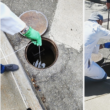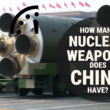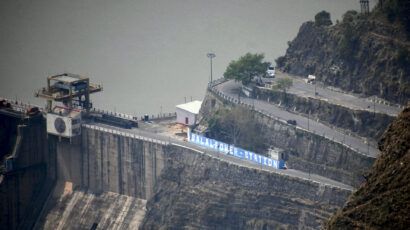On winter-safe deterrence and interdisciplinary research
By Seth Baum, April 3, 2015
I thank the roundtable participants for their continued discussion of winter-safe deterrence and biological weapons. With an eye toward the third and final round, my one request to them is that they suggest references in which interested readers could find further detail on these topics. Sonia Ben Ouagrham-Gormley has already suggested her book, Barriers to Bioweapons. I would appreciate any additional suggestions. I am especially interested in references for Martin Furmanski’s insightful comments on biological weapons testing and delivery systems.
In this post, I will reply to one comment from Gigi Kwik Gronvall and then offer a more general discussion of winter-safe deterrence as an interdisciplinary research project. I am not going into further detail on biological deterrence because I do not have much more to say at this time. Instead, I will be taking the points made into consideration as I continue my research.
Gronvall concludes her second round post by stating that “[a]dding a biological or other deterrent threat that can wreak more death and destruction would be going down the mountain, not up.” This is (I believe) to say that alternative deterrents should not be pursued in the context of nuclear disarmament. But some nuclear-armed states are already shifting their deterrence from nuclear weapons to weapons that cause less harm. The clearest example is the United States, which is actively shifting its deterrence towards conventional weapons. The 2010 Nuclear Posture Review states: “The United States will continue to strengthen conventional capabilities and reduce the role of nuclear weapons in deterring non-nuclear attacks.” I support the US effort to reduce the role of its nuclear weapons, and I do not believe that this is a particularly controversial position. All this is to say that some aspects of winter-safe deterrence are already mainstream military policy that is making a constructive contribution to climbing up that great mountain to a world without nuclear weapons.
With that, I will now make some more general comments about the winter-safe deterrence research and other research of this nature. My starting point is Gregory Koblentz’s second round post, which describes several flaws he sees in my winter-safe deterrence research. Clearly, he does not like this research or interpret it in the same way I do, and I do not think there is anything I can say in this space to change that. But his comments prompt a reflection on what it means to conduct good research.
Winter-safe deterrence is an inherently interdisciplinary topic. It begins with an analysis of winter-safe nuclear arsenal limits, which depends on a range of complex and poorly understood environmental and social phenomena as well as a careful treatment of risk and ethics. My suggested winter-safe limit of 50 total nuclear weapons worldwide is no doubt debatable. The research then analyzes a long list of candidate deterrents. Each of these weapons could have its own community of experts able to poke holes in my analysis—although, for one counterexample, I do not think neutron bombs have any active community of experts out there to chime in.
Ideally, winter-safe deterrence would be studied by a sizable team of experts on nuclear winter, risk analysis, deterrence theory, and each of the candidate weapons. Unfortunately, I did not have the luxury of assembling such a team. What I could have done is reach out to experts in all these fields for comment on my draft prior to its submission to the journal. I did get some expert comment, mainly on the nuclear winter risk analysis. I could have done more, but instead I judged, given my own constraints, that the paper was ready for submission. The paper then went through a constructive peer review that resulted in significant improvements to the paper. But peer review cannot catch every detail, nor should it be expected to. Peer review is especially difficult for this sort of interdisciplinary research, as it can be difficult to recruit reviewers with expertise across all the relevant areas. I know this issue firsthand as co-editor of a special issue on catastrophic threats forthcoming in the interdisciplinary journal Futures.
But peer review does not end at publication. A core virtue of the open publication of ideas is that they can be critiqued and improved by any interested parties. This is why I have gone out of my way to label my research as preliminary and to welcome the debate that my research has prompted. Because of this debate, progress on winter-safe deterrence is being made unusually rapidly. My only regret is that the debate has focused so exclusively on biological weapons. I commend the biological weapons community for its energetic response; I just wish other communities with expertise on other aspects of winter-safe deterrence would speak up, too. Surely other aspects of this research also have room for improvement.
It is important that interdisciplinary research on subjects like winter-safe deterrence be conducted. Too many major global issues do not fit neatly into established research fields. Progress on these issues often requires that researchers push outside their comfort zones in order to put all the pieces together and see the whole picture. I expect such research to be critiqued, including by those with expertise on specific pieces of the picture. But I do not think the existence of such criticism ought be taken as evidence that the research should not have been conducted in the first place. Progress is made by publishing and discussing, not by holding back.
Share: [addthis tool="addthis_inline_share_toolbox"]














